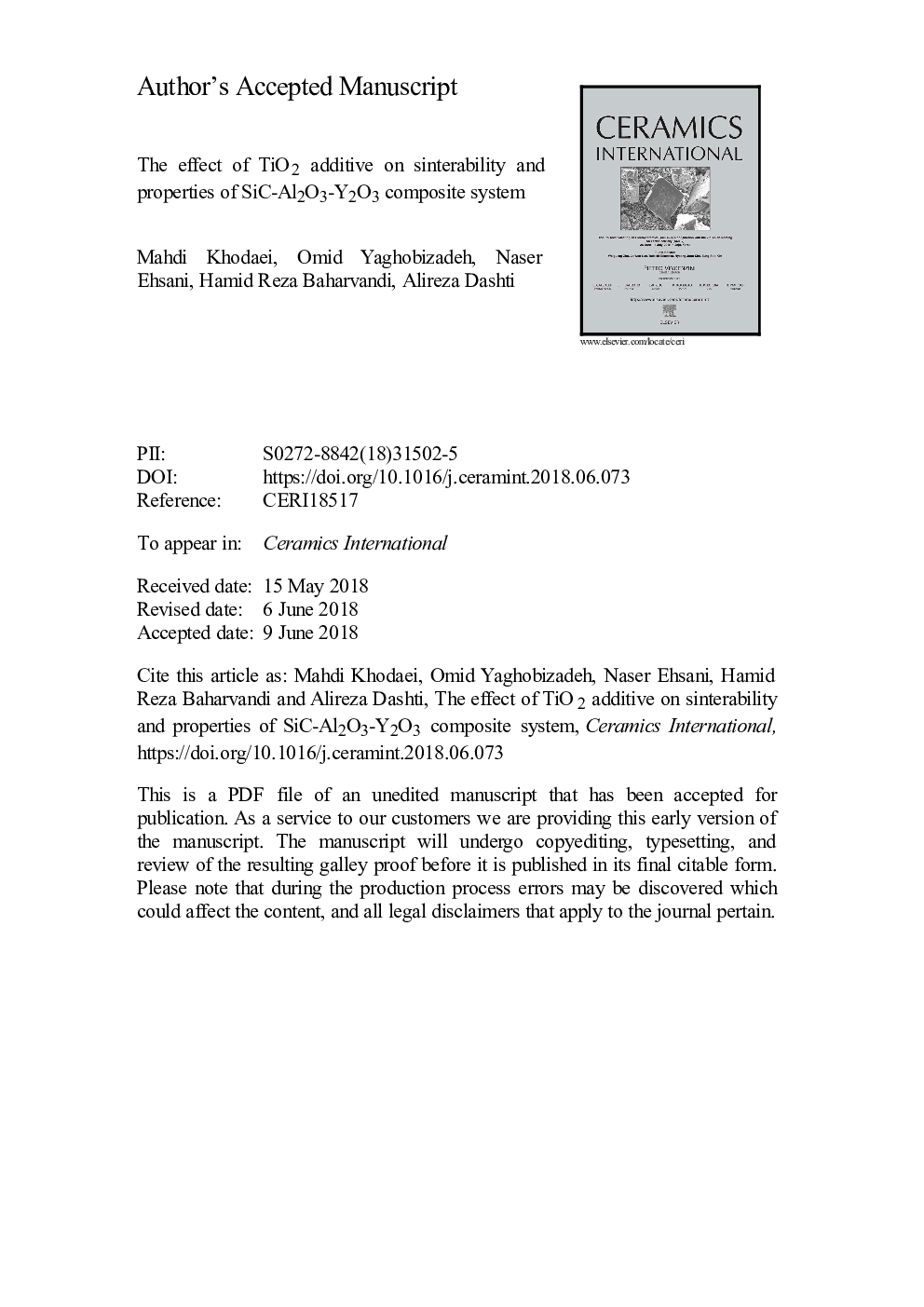| Article ID | Journal | Published Year | Pages | File Type |
|---|---|---|---|---|
| 7885980 | Ceramics International | 2018 | 25 Pages |
Abstract
In the current research, the effects of TiO2 additive on mechanical and physical properties of SiC bodies, sintered by liquid phase methods were investigated. Al2O3 and Y2O3 were used as sintering-aids (10â¯wt% in total) with an Al2O3/Y2O3 ratio of 43/57 to provide liquid phase during Sintering. TiO2 was also used as the oxide additive with an amount ranging from 0 to 10â¯wt%. After scaling and mixing the starting materials by a planetary mill, the obtained slurry was dried at 100â¯â for four hours. The derived powders were finally pressed under a pressure of 90â¯MPa. The samples were then pyrolyzed and sintered at 600â¯â and 1900â¯â, respectively under argon atmosphere for 1.5â¯h. Phase analysis showed no trace of TiO2 after the sintering process, demonstrating the complete TiO2 to TiC transformation. The results showed that an increase in TiO2 content up to 5â¯wt%, led an improvement in all the measured properties including the relative density, hardness, Young's modulus, bending strength, indentation fracture resistance and the brittleness factor, reaching to 96.2%, 24.4â¯GPa, 395.8â¯GPa, 521â¯MPa, 5.8â¯MPaâ¯m1/2 and 286.5â¯Ãâ¯10â6 mâ1, respectively. However more than 5â¯wt% additive resulted in a decrease in all the above-mentioned properties. Microstructural studies demonstrated that crack deflection and crack bridging were the major mechanisms responsible for an increase in the indentation fracture resistance.
Related Topics
Physical Sciences and Engineering
Materials Science
Ceramics and Composites
Authors
Mahdi Khodaei, Omid Yaghobizadeh, Naser Ehsani, Hamid Reza Baharvandi, Alireza Dashti,
